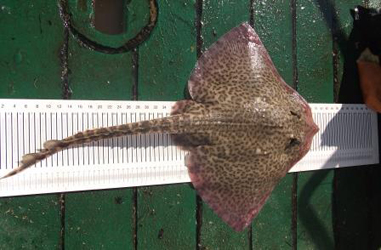Identifying the main factors affecting the spatial distribution of marine predators is essential in order to evaluate their distribution patterns, predict the potential impact of human activities on their populations and design accurate management actions. In this context, using deviance partitioning analyses, authors aimed to determine the degree to which environmental features, prey availability and human activities interact and influence spatial distribution of two marine mesopredator elasmobranchs, the small-spotted catshark and the Mediterranean starry ray, living in a highly human-exploited environment. Results revealed that environmental variables were the most important factors explaining the spatial distribution of Mediterranean starry ray, whereas small-spotted catshark distribution was also influenced by prey availability and human factors. From a management point of view, these findings suggest that Mediterranean starry ray could be a good candidate as an indicator species of demersal environmental quality. The spatial distribution of elasmobranchs in highly human-impacted marine areas can reflect the interactive and combined effects of multiple factors. To avoid misunderstandings, attention should be paid to statistical procedures allowing the separation of pure and joint contribution of the factors driving the observed spatial patterns. informacion[at]ebd.csic.es: Navarro et al (2015) Differences in the relative roles of environment, prey availability and human activity in the spatial distribution of two marine mesopredators living in highly exploited ecosystems. J Biogeogr DOI: 10.1111/jbi.12648
http://onlinelibrary.wiley.com/doi/10.1111/jbi.12648/abstract

 Las altas temperaturas están provocando que las lagunas y las marismas de Doñana pierdan agua rápidamente
Las altas temperaturas están provocando que las lagunas y las marismas de Doñana pierdan agua rápidamente




